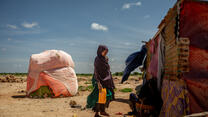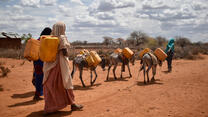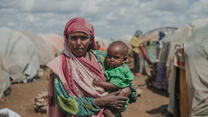
In East Africa, three years of a catastrophic drought have affected 40 million people and caused the highest rates of severe and acute malnutrition (SAM) on record. Other countries and regions around the world, including Africa’s Sahel region and Afghanistan, also face crisis-level food insecurity.
One common thread across these contexts and crises is that children are the most impacted. Below, learn why this is and what the IRC is doing to help.
What is a hunger crisis?
A hunger crisis happens when families have an unusually high level of malnutrition because they are unable to access the food necessary to meet their nutritional needs. Families may be forced to sell their belongings in order to afford food or they may need to leave their villages, sometimes walking for days in search of food. These journeys are dangerous and may lead to death in cases where extreme hunger and malnutrition begin to affect internal organs.
Children are most at risk of death, whether from starvation or from preventable diseases that turn deadly because of the ways malnutrition weakens their bodies.
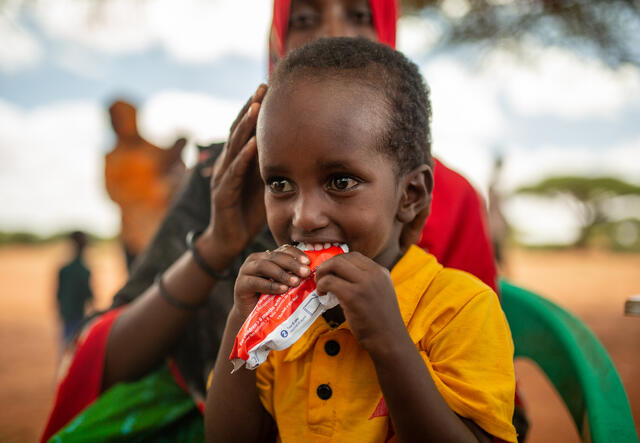
“People are not just dying due to a lack of food. Hunger means their weakened bodies cannot fight off diseases like diarrhea, measles or malaria, so death rates are high,” says Abukar Mohamud, IRC’s Deputy Director of Programs for Somalia. “Children are particularly at risk and often die at double the rate of adults. And those who survive will face ill health for the rest of their lives. The 2011 famine saw over 250,000 people die of hunger—half of whom were children.”
How do hunger crises affect children?
For children, a lack of food and nutrients during the developmental stage of life can lead to lifelong setbacks. Around the world today, millions of children are malnourished.
Children in hunger crises experience "wasting", the condition in which a child’s weight and muscle mass are disproportionate to their height as a result of severe malnutrition. Their growth may also be stunted, which in turn damages their physical and cognitive development. A child experiencing wasting or stunting is 11 times more likely to die than a healthy child, with the impacts of these conditions reducing the ability of the child to fight off and recover from usually mild illnesses like diarrhea or measles.
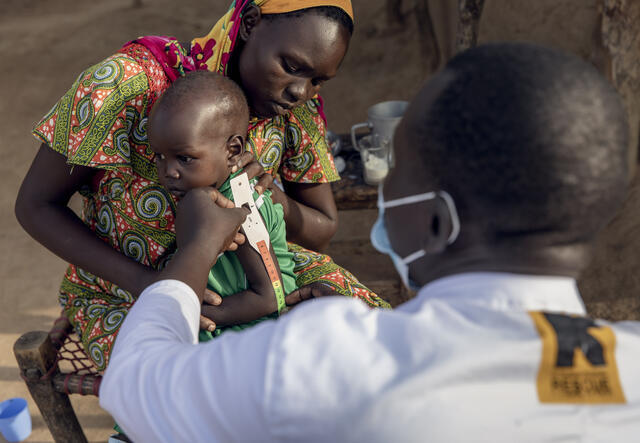
Impact on future generations
When children who experienced hunger crises grow up and have children of their own, those children are more likely to be born prematurely or underweight. New mothers suffering or who have suffered from malnutrition may not be able to pass enough nutrients to their children when breastfeeding.
There are also impacts on the baby when the mother is malnourished during pregnancy.
“If a mother is malnourished herself and underweight, when she delivers her baby, this may lead to her child becoming malnourished,” says Dr. Kassim, who has been contributing to the IRC’s malnutrition response in Nigeria since 2016.
Where do children face hunger crises?
Regions experiencing conflict, insect plagues, drought and other climate-related crisestend to be most impacted by food insecurity and hunger. East Africa, Africa’s Sahel region and Afghanistan are all currently grappling with some of the world’s most severe hunger crises.
In some areas of East Africa, the demand for humanitarian aid is higher than the supply. The result is a large and growing number of children at risk of starvation. Somalia, Ethiopia and Kenya alone report over seven million children currently on the verge of starvation. In Somalia, half of all children are experiencing acute malnutrition.
A similar crisis troubles Africa’s Sahel region, where the number of people in need of emergency food assistance has risen from seven million in 2015 to over 30 million in 2022.
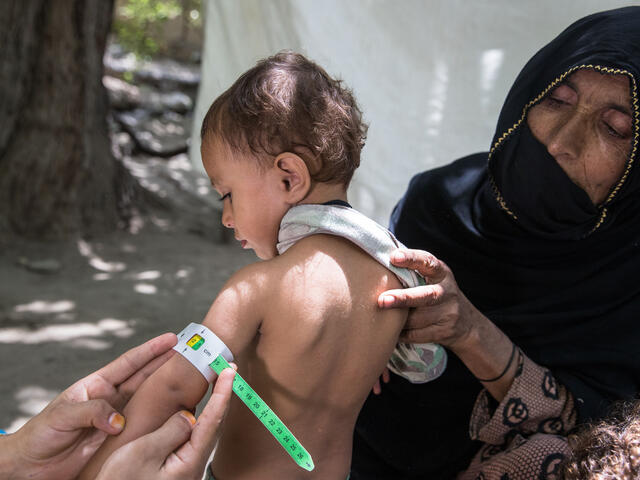
Foreign humanitarian funding to Afghanistan has also decreased since the Islamic Emirate of Afghanistan (IEA), commonly known as the Taliban, took control of the country in August 2021. This drop in funding forced the closure of many health clinics in Afghanistan. Economic collapse and an ongoing drought, also intensified by climate change, have put 3.2 million children at risk of death as a result of malnutrition, as of June 2023.
Are famines natural disasters?
Famines are not natural disasters. They are the consequence of human action and inaction.
Famines are the most severe form of hunger crisis. When a famine is declared, people have already been living on very little food, children are experiencing stunting and wasting and families have been selling all their possessions in order to feed themselves. By the time a famine is declared, it’s too late to save hundreds of thousands of lives.
While weather patterns and climate change can reduce crop yields, there is also often a man-made contribution to the crisis. People may have been forced from their homes and farms, or there may have been an outburst of conflict or other societal crisis.
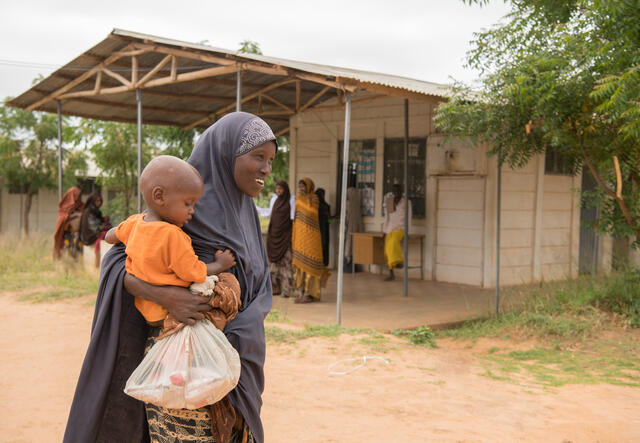
Conflicts around the world have displaced millions of people, collapsed healthcare systems and disrupted daily life.
“There is nothing natural about famines in the 21st century,” says David Miliband, president and CEO of the IRC. “While a complex set of factors are driving extreme hunger, the slide into famine and mass death is man-made, driven by international inaction.”
Action must be taken immediately to save the lives of millions affected by hunger crises around the world. The IRC is dedicated to preventing famines and works every day to help those affected.
How does the IRC combat child hunger?
The IRC works to reduce child hunger by providing nutritional assistance and other health care, leading community training on malnutrition prevention, and giving cash assistance and clean water to vulnerable families.
Health care
The IRC has set up a series of inpatient stabilization centers to provide treatment for mothers and children suffering from severe acute malnutrition in their own communities, making sure that care comes to those in need and not the other way around. For less severe cases, we host a training program where mothers are taught best feeding practices while children receive nutritious food.
The IRC also has mobile health teams that provide healthcare and treat malnutrition in remote areas. In Kenya, Nigeria, Syria, Yemen and other places, IRC mobile health teams reach thousands of malnourished children who otherwise struggle to get help.
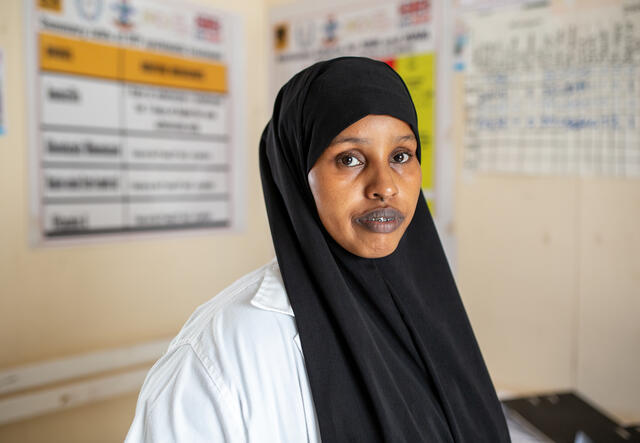
Malnutrition prevention and treatment training for affected communities
Currently, 80% of malnourished children do not have access to treatment. Through IRC-funded clinics, training community health workers and mobile health clinics, the IRC is working to diagnose and treat more children with acute malnutrition more efficiently through a simplified approach developed by the IRC.
This is called “combined protocol”, and is an easy, effective way to diagnose and treat malnutrition that allows the same treatment to be used in different doses according to each child’s needs. Malnourished children are treated with a nutritious peanut paste, and with a simple paper measuring tape, that community health workers and even parents can use to diagnose malnutrition at home.
These items are affordable, lightweight and require no refrigeration, making them easy to transport in challenging settings. We are working to raise funds and remove blocks so that this treatment can be distributed at scale in places like East Africa.
Cash relief
Cash relief has proven to be an effective tool to provide immediate assistance to vulnerable populations. This program gives families cash or vouchers that can be used to buy essentials, including food. It is a fast, efficient and cost-effective form of aid that also supports local businesses during a crisis.

Water and sanitation support
Access to clean water and sanitation is needed to prevent illness from spreading in areas where hunger crises have weakened people’s immune systems. In East Africa, the IRC is helping drought-affected communities through water trucking. When water sources are cut off or run dry, our trucks carry 5,300 gallons of water to the affected villages, ensuring families receive water every three days.
The IRC is calling on world leaders to stand with us in our mission to provide water, case relief and health care to children put at risk by hunger crises. No child deserves to have their lives threatened by a lack of food and its consequences.
*Last name omitted for privacy
